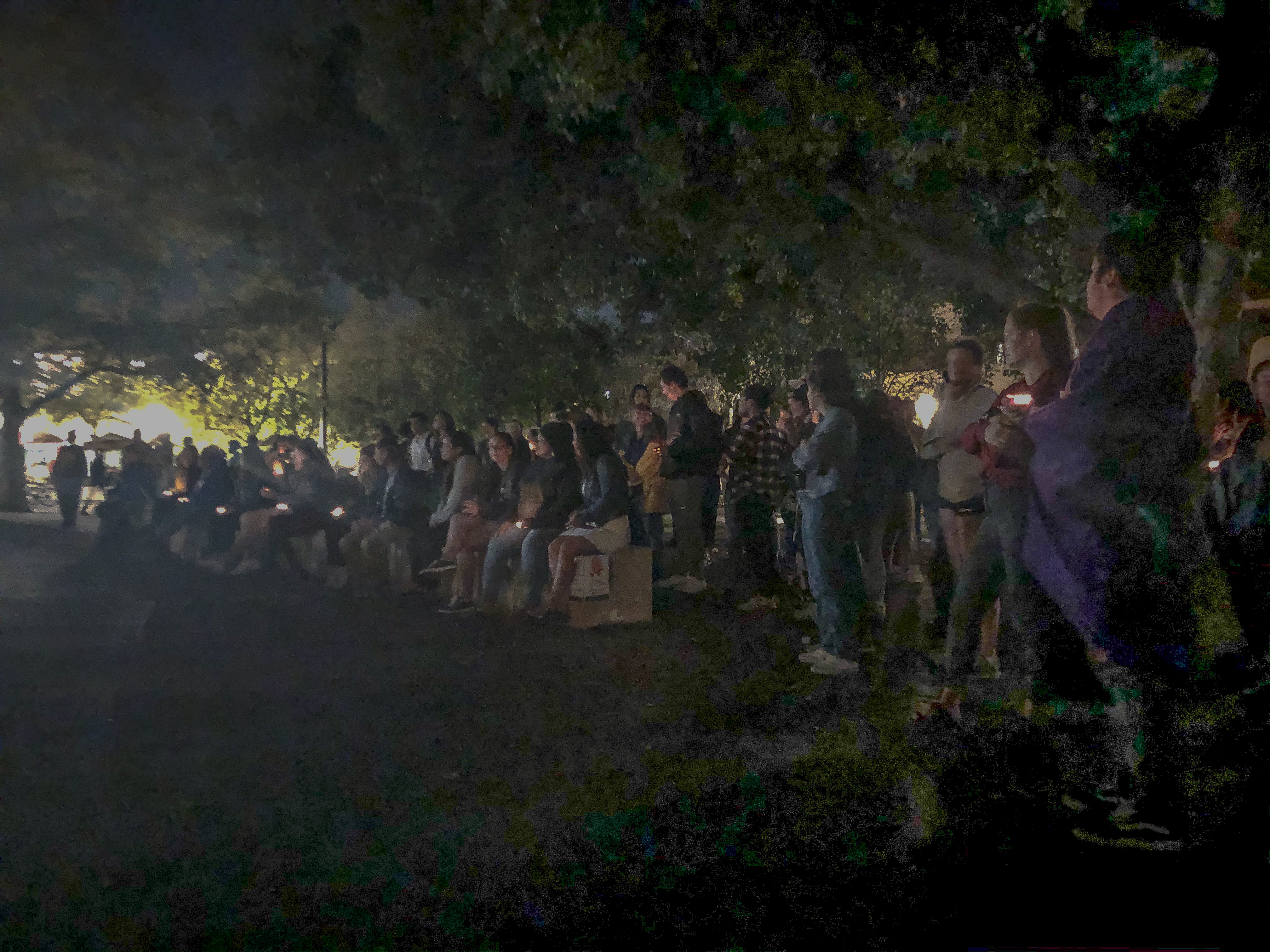To commemorate Indigenous Peoples’ Day on Monday, members of the Stanford American Indian Organization (SAIO) participated in an annual sunrise ceremony at Alcatraz and led an evening vigil at White Plaza.
Some students traveled in canoes to the Alcatraz event, the International Indian Treaty Council’s Indigenous Peoples Day Sunrise Gathering, which featured protocol, a series of chants and traditional dance and music performances.
“It’s important to know why we went,” Xolotl Alfonso Xochipilli Cruz-De Jesus ’22 said. “It is not to celebrate the history of Columbus and the idea of colonization, but to celebrate what it means to be indigenous. It’s about understanding what it’s like to have human rights taken away from you and how to unite with each other and appreciate the beauty that is people of color and indigenous land and territory.”
The canoe journey, the first of its kind to be held in the Bay Area, celebrated different tribes coming together to honor the 50th anniversary of the Occupation of Alcatraz, in which Native Americans and their supporters occupied Alcatraz Island for 19 months, beginning in 1969. With the occupation, Native American activists and students protested Indian termination policy, meant to assimilate Native Americans into mainstream American culture. The protestors also wrote the Alcatraz Proclamation and sought to reclaim the island and promote Native American culture.
“The Occupation was a key moment in Native American civil rights history,” said Ravi Smith ’22, who is a member of the Makah Tribe and SAIO Programming Co-Chair, as well as a Daily writer. “It created an identity for American-Indians as a political group. Veterans of the occupation embodied the warrior spirit by putting their lives on the line to stand up for their community.”
Amid the Alcatraz occupation, Stanford students founded SAIO in 1970. The group called for the University to abandon its “Indian” mascot later that year, which Stanford did in 1972.
On Monday, Stanford students participated in the canoe journey by rowing Hawaiian-style boats.
“It is significant that we as students participated in celebrating the 50th anniversary because we are benefiting from what students did back then,” Smith said. “We wouldn’t be here without student leaders that came before us, and we hope to take after their example and be influencers for generations of indigenous people that come after us.”
In the evening, SAIO held an annual candlelight vigil featuring a Mohawk-language prayer — acknowledging and reminding attendees that Stanford is built on Muwekma Ohlone land — as well as a performance from a capella group Talisman and poems written by Native American students. Members of Hui o Na Moku, Stanford’s Pacific Islander club, also criticized plans to build the Thirty Meter Telescope on Mauna Kea, a sacred mountain to Native Hawaiians.
The event showcased the diverse tribes and experiences of the Native community at Stanford while displaying the tight-knight community they have formed at Stanford through student organizations such as SAIO and spaces such as the Native American Cultural Center.
“For us, Indigenous People’s Day is about our families and our communities and our friendships,” said SAIO Co-President Caelin Marum ’21. “Our goal is to express that we are still here and we are resilient and our identity is not one purely of tragedy, although we do carry that heritage. A lot of our identity is who we are encapsulated as a community.”
The vigil concluded with a round dance, in which vigil attendees link arms and dance in a circle, a dance commonly performed in powwows.
“Indigenous People’s Day is a chance for us to come together and put our voices together so we can create spaces and build more community so that we’re not alone in this fight,” said Ramiro Hampson-Medina ’20, a performer at the vigil. “We are here. We are going to stand strong. We are never going to stop fighting. Our voices are only going to get louder. Our presence will be heard.”
Casey Hidekawa Lane contributed reporting.
Contact Patricia Wei at patwei ‘at’ stanford.edu.
